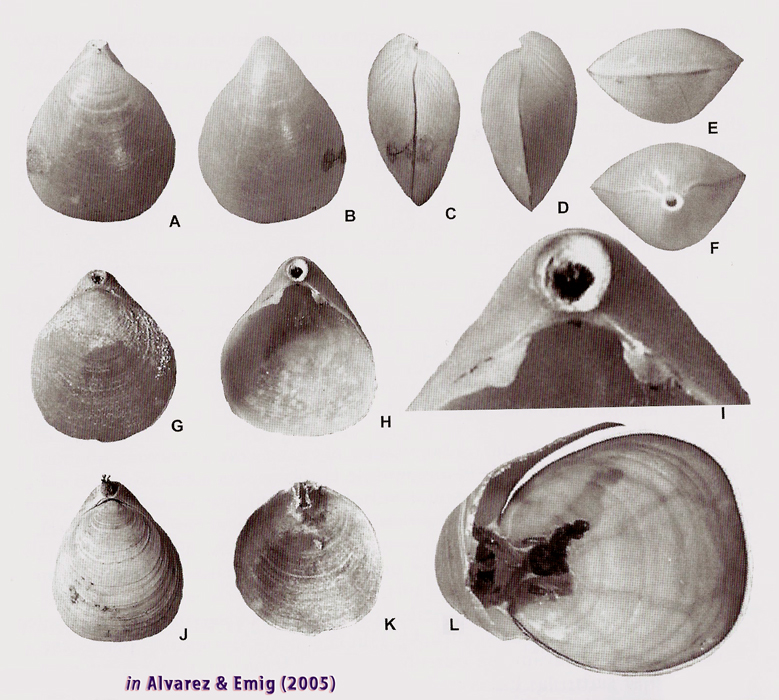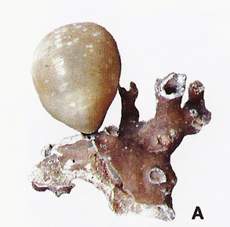|
Stenosarina sphenoidea (Philippi, 1844)
Type locality: - Jeffreys (1878) : St. 25, depth 684 m, Porcupine expedition; Logan (1998) : Atlantis seamont : DW 258 (33°59'N, 30°124W, 420-460 m), Campagne Seamont 2 (1993).
Depth range: 255 - 2220 m
Terebralula vitrea var. sphenoidea [not Philippi ?] : Jeffreys (1878)
Liothyris sphenoidea : Davidson (1886, p. 12, pl. 2, fig. 17, 18 only)
Terebratula (Liothyrina) sphenoidea : Fischer & Œhlert (1890; 1891, p. 58)
Liothyrina sphenoidea : Blochmann (1908, p. 619)
Dallithyris? aff. D.? sphenoidea : Cooper (1981, p. 15)
Stenosarina sphenoidea : Cooper (1983, p. 272)
Stenosarina crosnieri (Cooper, 1983)
Stenosarina davidsoni Logan, 1998 [*]
Diagnosis from Alvarez & Emig (2005)
Concha de tamaño media (L. max. = 27 mm), blanca, delgada, translucida.
Contorno ovalado longitudinalmente, subtriangular a pentagonal redondeado. Biconvexa a ventribiconvexa. Maxima anchura (A. max. = 20 mm) en la zona anterior, cerca de la mitad de la longitud de la concha. Gancho ventral corto, con abertura peduncular amplia y redonda. Superficie generalmente sólo con lineas de crecimiento concéntricas. Crura cortos y delgados; braquidio con procesos crurales cortos y rama transversa ancha y con un claro pliegue medio. CanaIes del manto ramificados anterolateralmente.
[*] No diagnosis has been given by Logan (1998) - this lacks is contrary to the International Code of Zoological Nomenclature (1999)
|
Recorded in many Tertiary outcrops, mainly in Italy, the fossil Terebratula sphenoidea has been described by Philippi (1844) as a fossil species. This species has been confused with the living Gryphus vitreus by Jeffreys (1878) in the Mediterranean and since by several other authors. Nevertheless, Logan (1998) decided to call the species Stenosarina davidsoni, a new species name to avoid further confusion with the Mediterranean fossil species which is a valid species. Unfortunately, the name davidsoni is occupied by four other terebratulid species, consequently increasing confusion!
The status of davidsoni should remain under debate until a comparaison based on all the taxonomic characters and their variations of the fossil and recent forms of "Terebratula sphenoidea".
Recent investigations (Emig, 2016; Emig in preparation) may conclude that this species is that described by Philippi in 1844. Consequently, this species should be named Stenosarina sphenoidea (Philippi, 1844).

Click on to enlarge
|



